The Dangers of Net Wrap Ingestion
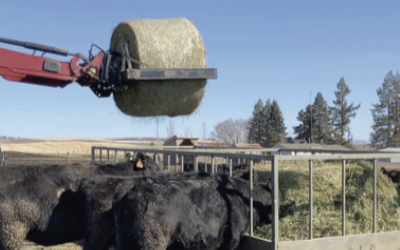
Plastic twine has been used to wrap hay bales for years, but today, many forage producers prefer to use net wrap in place of twine due to faster baling and lower baling losses.
The WTR stands for Wrap Twine Remover. This attachment tool is designed to grab, cut, and remove twine/net wrap from round bales and/or large square bales in one swift motion. Read more below!
The Dangers of Net Wrap Ingestion
Plastic twine has been used to wrap hay bales for years, but today, many forage producers prefer to use net wrap in place of twine due to faster baling and lower baling losses. Some cattlemen choose to remove the twine/net wrap before feeding, however there are some that leave the twine/net wrap on the bale or chop it up in the tub grinder. Many do this in order to reduce the time and hassle of removing it by hand, especially when the bales are frozen.
Although it may be more convenient to leave net wrap/twine on bales before feeding, there has been substantial research done that proves it to be an unsafe practice that has the potential to lead to illness and/or death of cattle. We are uncertain whether or not all cattlemen are aware of the risk they are putting themselves at when feeding bales to animals with the twine/net wrap still intact. We hope the following information will serve to inform ranchers of the inherent risk as well as offer a valuable solution.
The Research
Studies have been done that suggest that cattle who ingest net wrap may not be able to fully digest the substance, however since it has become a more common practice, it seems many ranchers overlook this risk. One study, completed by Carl Dahlen, beef specialist at North Dakota State University, demonstrated the effects that net wrap has on cattle after ingestion. Dahlen said that “Net wrap may accumulate in the rumen and create blockage/impaction or reduce the amount of feed the cow can eat and may cause weight loss. Some ranchers have had cows waste away to the point that they had to be humanely destroyed – and net wrap was found in the rumen at necropsy.” Because of this, Dahlen was determined to conduct a study that would help understand if net wrap was really the cause of the problem.
The NDSU study compared various materials to see how well they would break down when passed into the rumen – the first stomach which receives food or cud from the esophagus and partly digests it with the aid of bacteria. Each material was cut into small pieces and put into nylon bags. The bags were then placed in the rumen of forage-fed Holstein steers. After having sat in the rumen for 14 days they found that none of the net wrap or biodegradable twine samples diminished! This study also discovered that net wrap blockage impacted weight loss in the animal due to the rumen being full, which then inevitably led to the cow’s inability to eat.
After reviewing the results of the study Dahlen reported that “a little in the rumen may not be damaging, but as the cow accumulates it over time, we see reduced feed efficiency and weight loss. As the cow gets older and part of their rumen is full of net wrap, it will never be filled with hay and the animal will not do well.” He also mentioned that “If it’s a heavily pregnant cow, she may be in danger of suffocation from the distended rumen.”
As the above research clearly shows – there is a great danger in allowing cattle to ingest the twine/net wrap off the bale or grinding it into a tub grinder. This brings ranchers to a certain decision point: either accept getting on and off the tractor to cut and remove twine/wrap prior to feeding bales to ensure the safety of their animals or take the gamble that it won’t affect their cattle enough to go the extra mile. However, this inconvenient chore may be a thing of the past now that Hillco has introduced the automatic Net Wrap Remover.
A Solution To The Problem- Hillco WTR
Hillco Technologies has designed and introduced what is called the WTR – Wrap Twine Remover. This attachment tool is designed to grab, cut, and remove twine/net wrap from round bales and/or large square bales in one swift motion. The rancher is then able to feed the bale or unroll it for bedding purposes, without the risk of the cattle ingesting the dangerous materials. Once the bale is fed, the twine/net wrap can be dropped outside of the pen or in a trash pile for later removal, all the while, allowing the rancher to remain safely seated in/on the tractor.
Here's How it Works:
When the bale is ready to be fed, the cutting knife and hooks are engaged, cutting and grabbing the wrap.
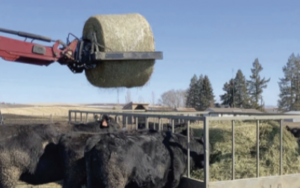
After the wrap is cut, the hooks hold onto the wrap and the pressure on the squeeze arms is released.
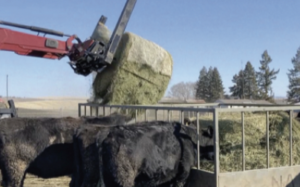
The arms can be rotated up out of the way, pulling the wrap off of the bale. The bale is then dumped into the feeder.
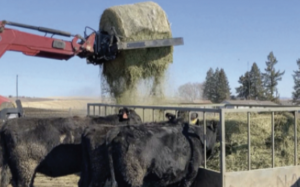
The tractor operator can release the hooks and dump the wrap in a pile outside of the pen or in a garbage bin.
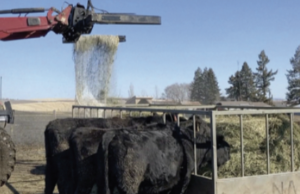
For more information on the Hillco WTR, send us an inquiry on our website or contact us at 800-937-2461

